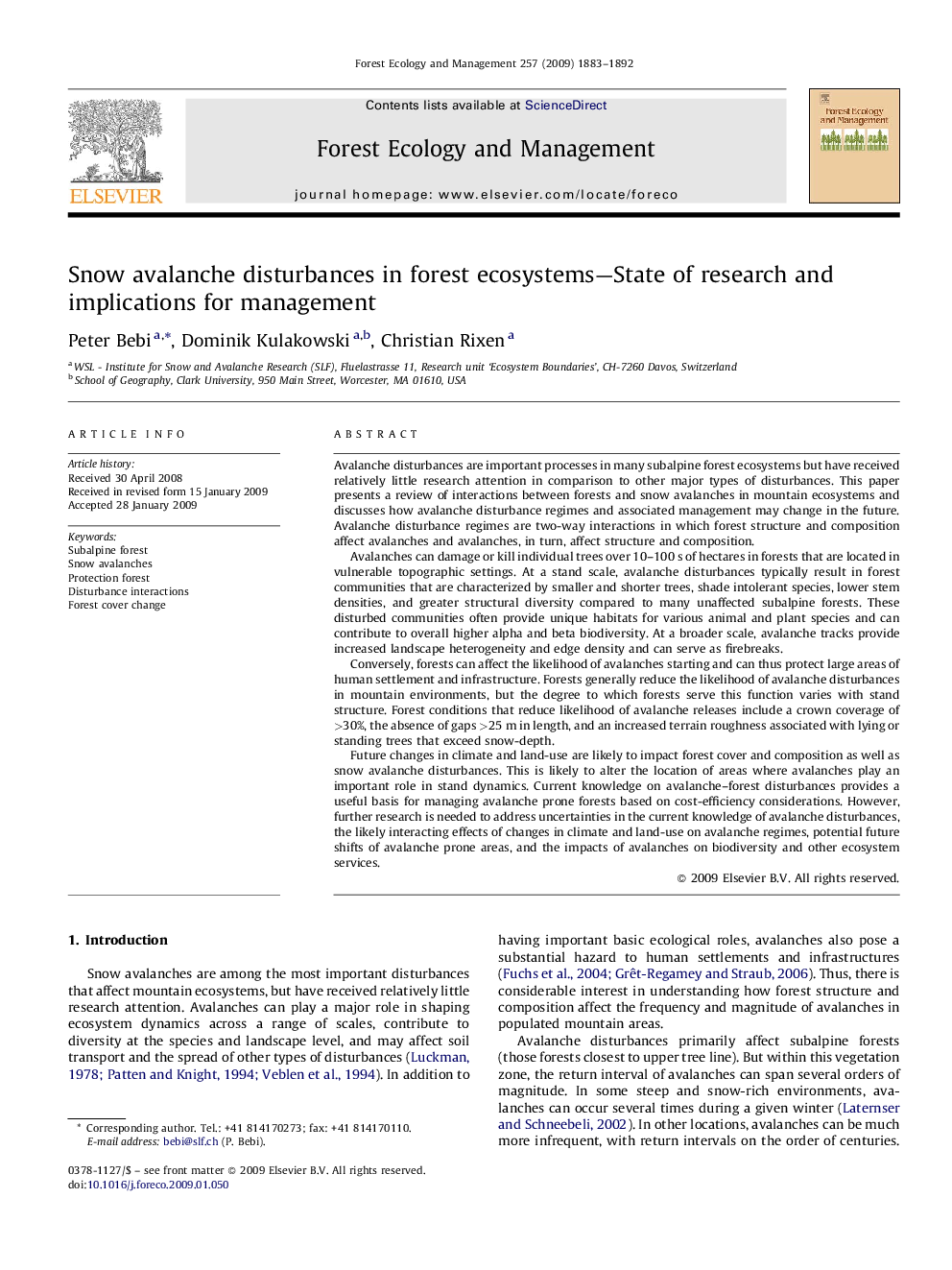| Article ID | Journal | Published Year | Pages | File Type |
|---|---|---|---|---|
| 88470 | Forest Ecology and Management | 2009 | 10 Pages |
Avalanche disturbances are important processes in many subalpine forest ecosystems but have received relatively little research attention in comparison to other major types of disturbances. This paper presents a review of interactions between forests and snow avalanches in mountain ecosystems and discusses how avalanche disturbance regimes and associated management may change in the future. Avalanche disturbance regimes are two-way interactions in which forest structure and composition affect avalanches and avalanches, in turn, affect structure and composition.Avalanches can damage or kill individual trees over 10–100 s of hectares in forests that are located in vulnerable topographic settings. At a stand scale, avalanche disturbances typically result in forest communities that are characterized by smaller and shorter trees, shade intolerant species, lower stem densities, and greater structural diversity compared to many unaffected subalpine forests. These disturbed communities often provide unique habitats for various animal and plant species and can contribute to overall higher alpha and beta biodiversity. At a broader scale, avalanche tracks provide increased landscape heterogeneity and edge density and can serve as firebreaks.Conversely, forests can affect the likelihood of avalanches starting and can thus protect large areas of human settlement and infrastructure. Forests generally reduce the likelihood of avalanche disturbances in mountain environments, but the degree to which forests serve this function varies with stand structure. Forest conditions that reduce likelihood of avalanche releases include a crown coverage of >30%, the absence of gaps >25 m in length, and an increased terrain roughness associated with lying or standing trees that exceed snow-depth.Future changes in climate and land-use are likely to impact forest cover and composition as well as snow avalanche disturbances. This is likely to alter the location of areas where avalanches play an important role in stand dynamics. Current knowledge on avalanche–forest disturbances provides a useful basis for managing avalanche prone forests based on cost-efficiency considerations. However, further research is needed to address uncertainties in the current knowledge of avalanche disturbances, the likely interacting effects of changes in climate and land-use on avalanche regimes, potential future shifts of avalanche prone areas, and the impacts of avalanches on biodiversity and other ecosystem services.
